Where Do Spider Mites Come From? (Prevention Tips & More)
Author: Jen Worst | Editor: Omar Alonso
Review & Research: Jen Worst & Chris Miller
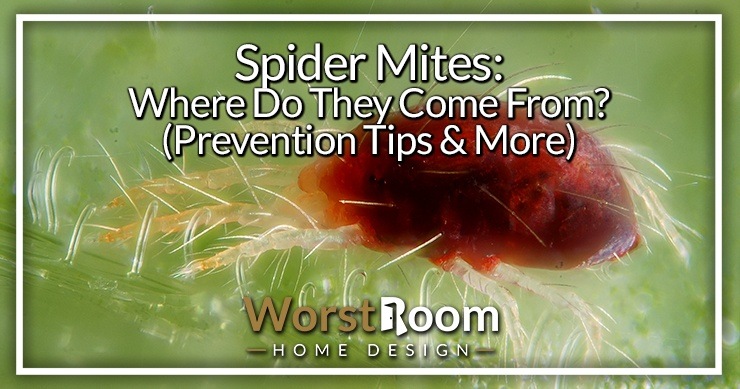
Everyone has dealt with spider mites at one time or another. You'll finally remember to water your plants on the front porch or back patio, wait patiently while filling up the watering can, and then head triumphantly towards your plants.
You get there and you're immediately deflated. Your plants have started to turn yellow in places. You lean in to take a closer look and notice there's a fine webbing scattered about.
Is this some kind of new extraterrestrial fungus? Nope, it's a common arachnid that loves to drive us nuts.
Where do spider mites come from? How do we get rid of them and prevent an infestation next time? Are they harmful to us? Are they getting inside the house? Maybe you found them on indoor plants. What do we do? I've got all the answers and more below.
Where Do Spider Mites Come From?
Spider mites are so small and lightweight that they can be moved about by a slight breeze, aided by releasing some of their webbing. They also can be attached to your clothing or shoes, such as the case of spreading a colony from a local nursery back to your home.
If you have a dog or cat that goes inside and out, they can bring them into your garden and home. Even your friends and family can unwittingly bring them over.
What are Spider Mites?
Spider mites are one of 1,200 species in the Tetranychidae genus in the Acari family. They like to nest on the underside of the leaves of our plants.
They spin fine silk webs as a protective measure from other creatures so they can be at peace as they suck the nutrients out of plant cells. To put it plainly, they're tiny little spiders that feast on plants.
What Do Spider Mites Look Like?
These guys are tiny, usually less than 0.04 inches in length. That's why we have a hard time seeing them in addition to them usually hanging out on the bottom sides of the leaves.
If you look closely, given sufficient time, you'll notice an entire colony has made your house plants their home. The webbing you see is meant to protect them from predatory insects and birds.
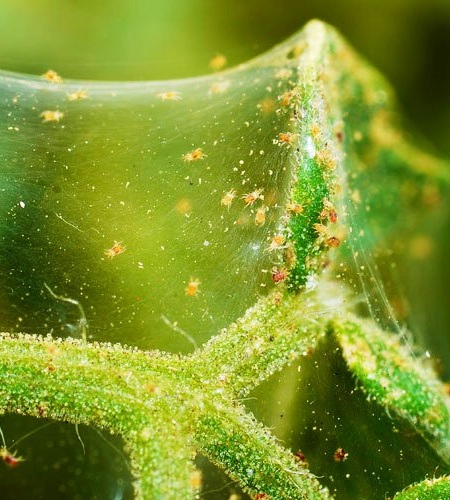
Adult spider mites have four pairs of legs, totaling 8 legs, and have a mouth that's host to two fangs called chelcerae that they use to bite into plant cells. Their bodies will have varying colors depending on their diet.
Usually they'll take on a light brown, dark brown, or black appearance, though their legs will have a lighter brown color. Other types can range from a yellow shade to green and red hues as well.
Preferred Habitats of Spider Mites
You will find the most mites in higher temperature environments with lower humidity. Though they thrive better in dry conditions, they can be found in humid zones as well though this lowers their fertility and success in egg hatching.
If reproducing under optimal conditions (around 80.6 degrees Fahrenheit), they can adapt quickly and begin to resist pesticides, which is why you want to rotate which pesticides you use during prevention.
It's not clear why but dusty conditions seem to cause trouble for their fertility rates, which is why you don't find spider mites in soil or spider mites in carpet (not to mention the lack of a food source for them).
They're found consistently on leafy plants and trees and prefer those with greater concentrations of nitrogen, carbohydrates, and phosphorous.
They can be found developing their colonies indoors in hydroponic gardens, in greenhouses, and in commercial fields with drip irrigation systems that don't wash them from the underside of the leaves as frequently.
With hydroponics, even though they don't like the higher humidity, they'll deal with it and become a problem for you.
What Do Spider Mites Eat?
Spider mites eat plants, and scientists have catalogued them making a tasty snack out of over 300 species of plants so far.
It's doubtful there will ever be an exhaustive list, because these tiny beasts have a cosmopolitan distribution, meaning that they're found all over the world as long as there's an environment suitable for them to thrive.
Specifically, they will crawl to the underside of the leaves of your plants and puncture individual plant cells in order to suck out the sap that then weeps from the holes.
They'll accept anything that comes from the holes, including chlorophyll, which is why your plants begin to turn yellow in spots. If left unattended, they'll go after every plant cell they can, leaving thousands of holes and turning the entire leaf and plant yellow over time.
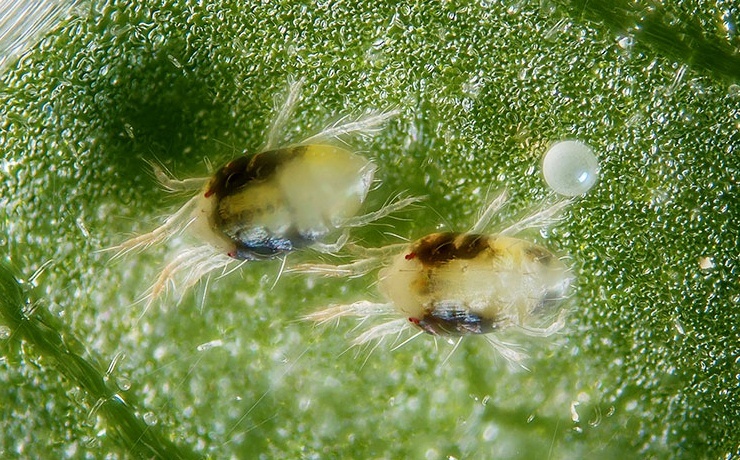
As mentioned, they'll eat on several hundreds of types of plants, but some of the most common are corn, strawberries, peppers, tomatoes, and potatoes. They even like that green plant that we aren't supposed to grow that all the college kids like, if you catch my drift.
Types of Spider Mites
The most common type of spider mite is the Tetranychus urticae, the "two-spotted spider mite," which is probably what you're dealing with. They're a global post.
If you're dealing with them on a fruit tree, you may notice they're red in color, meaning your trees are now host to Panonychus ulmi, known as the "fruit tree red spider mite," or you have the Panonychus citri, knows as the "citrus red mite."
But it could be any number of other ones. The Tetranychidae family is broken into subfamilies, tribes, and genera as a way to organize the 70 total varieties of spider mites.
There are 2 subfamilies and 6 tribes. Fortunately it doesn't matter which kind you have around, because getting rid of them is all the same.
Spider Mite Life Cycle
The life cycle of the spider might comes in five stages:
- Egg
- Larva
- Protonymph
- Deutonymph
- Adult
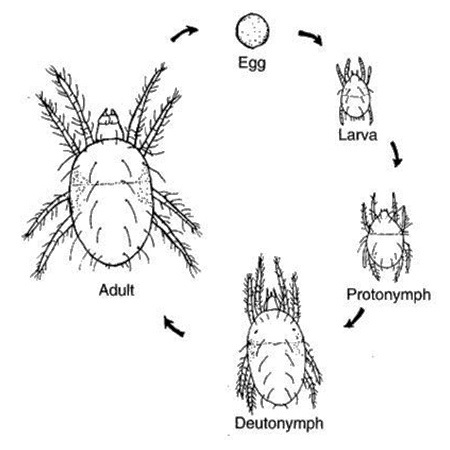
Egg Stage - The adult female begins the cycle by laying her eggs directly onto the underside of a plant's leaves. The laying of spider mite eggs can carry on for up to three weeks and include, on average, around 100 eggs in batches of around 20 eggs at a time.
If a male doesn't come around and fertilize the eggs, they will still hatch as males. If the eggs are fertilized then it will hatch as female. This is due to the diploid nature of the females and the haploid nature of males, referring to the number of chromosome sets they contain.
Naturally, not all eggs are fertilized and the result is a ratio of about 3 males for every female.
Larva Stage - The larval spider mite wastes no time feeding since they are born directly onto their food source. The larva emerges from the egg with three pairs of legs.
They use these six legs to disperse on the plant and begin eating, which influences their color. Their color also naturally darkens and they develop two distinct dark spots on their backs.
Protonymph Stage - The protonymph is a growth stage in which the larva comes to rest. During this inactivity, they reduce energy expenditures to divert them to growing two more legs and the capability of spinning webs.
At this time, they'll begin feasting again only to enjoy another period of inactivity.
Deutonymph Stage - This second period of inactivity allows the protonymph to grow into the deutonymph, a larger intermediate stage. Their hardened exterior is molted (shed off) in order to allow for this expansion in size.
They will then continue to contribute to building the protective silk webbing and begin eating again.
Adult Stage - Eventually the deutonymph rests again, molts again, and emerges as the full grown adult. It will have its final color based on which plant they grew up and derived energy from. At this stage the female can begin laying eggs to repeat the cycle.
The egg can hatch in as few as three days and become sexually mature by day five. Moving through the larva to adult stage can happen in as few as 10 days for a total growth period of 14 days.
The adult continues to live for an additional two to four weeks, giving them a total life period of a month and a half.
How to Get Rid of Spider Mites
Once you have an infestation, understandably the first step in to eradicate them. The main course of action is a broad spectrum chemical miticide, which interrupts the adult female's ability to lay eggs and stops present eggs from hatching.
First, you need to confirm that you actually have spider mites and not some other scale insects or aphids, etc.
One of the best methods to confirm it's them is to place a sheet of printer paper underneath the leaves of the yellowing plant and tap the leaves. This will cause some of them to fall onto the paper which you can then inspect with a magnifying glass.
Miticide for Spider Mite Control
The easiest and most often-used miticide is neem oil. Neem oil is an organic herbal pesticide that continues to repel these mites after you get rid of them. The only issue is this oil can gunk up the hoses of hydroponic gardens.
There are products like AzaMax that have refined the active ingredient of neem oil without the thickness of it. This is preferable to most people for indoor plants since it's not a spray.
For all other plants (non-hydroponic) I recommend using regular neem oil, as it will perform the same task at a quarter of the cost:
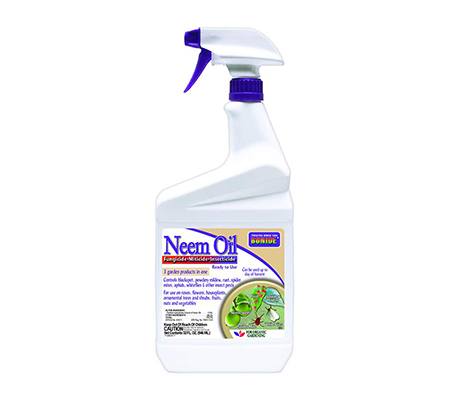
Alternatively, there are other natural, organic chemicals such as Mite-X. It smells nice, emitting hints of cloves due to the combination of clove, garlic oil, and cottonseed.
It coats the eggs (you have to use it repeatedly for a couple of weeks) to prevent them from hatching while the adults pass of old age.
Sierra Natural Science has their product called SNS-217 Mite Control that is way more gruesome. It's a poison to mites that corrupts their cells and cell replication processes, reducing their ability to store water.
They end up dying from dehydration while the rosemary extract also coats the eggs, zapping them of water and making it impossible for the larva to break the surface of the eggs. There are other options using canola oil and pyrethrins too, like Doktor Doom fogger spray.
Environmental Control Methods
This is somewhat goofy for most people except farmers and other larger scale operations, but there are means to keep the spider mite population down that don't include pesticides.
The first and foremost method in greenhouse sized operations is to simply use a high power water nozzle to spray your plants down every week. This will wash off the mites and their eggs to the ground.
There are also insects called predatory mites that you can purchase. They'll leave your vegetation alone and hunt down the spider mites with extreme prejudice.
Other insects, such as lacewings and lady bugs include spider mites in their diet and will help to a degree. The problem is, our enemy can multiply faster than they can be eaten, so I don't consider these great solutions.
How to Prevent Spider Mites
Spider mite prevention strangely comes down to having healthy plants. You've probably had mites dozens of times and never known it because your plants were able to resist the mite's ability to kill them.
Eventually the temperature changes and the mites die off and you were none the wiser.
The key components are a nutrient-rich soil and frequent watering. This will help your plants survive until sub-optimal temperatures occur with the new season or you take notice and eradicate the mites.
If it's too late and a plant is covered in webbing and nearly completely yellow, don't try to save it. Just remove it from your other plants so the infestation can't spread. Again, don't try to save it at all, just throw it in a garbage bag and tie it off.
Alternatively, if they've ravished one part of a plant but not others, you can prune those parts (go way past where you think you should) and just trash the bad limbs.
But warning, you do run the risk of not getting them all, so you'll need to begin a control method with neem oil or another chemical treatment as mentioned above, on this specific plant and the others near it.
For indoor plants, your best move is to simply add dusting to your routine. By that, I mean taking a moist rag and wiping down the top and bottom surfaces of the leaves. This will provide moisture, allow them more sunlight, and remove mites and their eggs.
Are Spider Mites Harmful?
Obviously spider mites are harmful to plants. They suck the life out of the leaves and eventually destroy the whole plant. But what you really want to know is if they are harmful to people, and the answer is no.
They not only do not bite humans but they can't. Their fangs are too small to penetrate your skin.
They don't harm cats, dogs, or farm animals either. They may hitch a ride on your pet once they brushed up against the wrong plant, but they can also be brushed off, rinsed off, or abandon ship once they realize there's no food around.
You don't have to worry about these mites hurting anything but your plants and trees.
Can Spider Mites Live in Carpet?
I know this is a big concern for the more paranoid and those of us simply disgusted by the idea of tiny bugs that aren't visible possibly being everywhere.
Spider mites can, as we mentioned, go into a state of inactivity to preserve energy, but this doesn't last long. They will have to feed and the carpet will not suffice.
Also, let's imagine an adult female that wants to lay eggs and even though she knows she'd rather do it on a leaf, she just has to squirt them out or she's going to pop. It's not likely, but even if this happened, the eggs might hatch and the larvae would immediately starve.
So the real answer is no, they cannot live in your carpet. They may be a few down there temporarily until they starve and you vacuum them up. But there will never be a carpet infestation.
And Now You Know!
And that's it. You now know everything there is to know about spider mites at a normal, non-Ph.D level. All that's left is to get rid of them and prevent them from feasting on your plants again. And that's a piece of cake.



